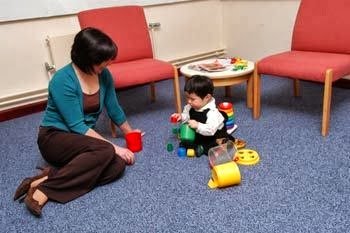There’s a quiet magic that fills the air on Mother’s Day—a feeling that’s hard to explain but unmistakable. Scientists have long been captivated by the invisible threads that tie mothers and children together, creating a connection that can last a lifetime. Underneath the hugs and homemade cards, there’s a fascinating world of biology and emotion. These bonds aren’t just sentimental; they’re deeply rooted in our bodies, shaped by hormones, heartbeats, and millions of years of evolution. As we celebrate Mother’s Day, it’s worth exploring what makes this relationship so unique—and so vital to our lives. Imagine a newborn’s first cry, a mother’s soothing touch, or the way a child’s laugh lights up her face. There’s real science behind those moments, and it’s more wondrous than you might guess.
The Oxytocin Effect: Nature’s Glue for Attachment
Oxytocin is often called the “love hormone,” and for good reason. This powerful chemical surges through the brain and bloodstream during childbirth and breastfeeding, fostering trust and deepening emotional bonds. When mothers cradle their newborns, oxytocin levels skyrocket, sparking a cascade of warmth and protective instincts. But it doesn’t stop with infancy. Touch, eye contact, and shared affection can trigger oxytocin in both mother and child, reinforcing their emotional connection. Scientists have even shown that oxytocin helps calm stress and reduce anxiety, acting like a biological balm that nurtures both hearts and minds. It’s as if nature designed a built-in mechanism to ensure that mothers and children feel close, safe, and cared for, right from the very start.
The Rhythms of the Heart: Synchrony and Bonding
Have you ever noticed how a baby’s heartbeat seems to settle when resting against their mother’s chest? This isn’t just a sweet coincidence—it’s a phenomenon called cardiac synchrony. Studies reveal that mothers and infants can unconsciously align their heart rates and breathing patterns during moments of closeness. This remarkable biological dance helps regulate the infant’s emotions and provides a sense of security. The simple act of cuddling or rocking can actually tune two heartbeats into harmony, building a sense of unity that goes beyond words. Such synchrony is more than symbolic; it lays the groundwork for lifelong emotional resilience and trust.
Mother-Infant Communication: More Than Words
Long before a child can speak, communication between mother and infant is rich and nuanced. Through gentle coos, facial expressions, and the soft rhythm of a lullaby, mothers send powerful signals that shape a child’s brain and emotional development. Even subtle shifts in tone or a reassuring touch convey safety and love. Scientists call this mutual attunement, and it’s essential for healthy attachment. When a mother is attuned to her baby’s needs, the child learns that the world is a safe place—a lesson that echoes throughout life. This silent conversation is the foundation of social and emotional intelligence.
The Role of Dopamine: Joy and Reward in Bonding
Dopamine, the brain’s “reward chemical,” plays a starring role in the joy of bonding. When a mother smiles at her baby, the brain releases dopamine, creating feelings of pleasure and reinforcing the desire to care and connect. This neurological reward system motivates both mother and child to seek closeness, deepening their relationship with each affectionate exchange. The rush of happiness when a child laughs or snuggles up close isn’t just emotional—it’s a surge of dopamine reminding both that love is worth every moment. Over time, these rewards shape behavior, teaching us that nurturing relationships bring lasting fulfillment.
Evolution’s Blueprint: The Survival Power of Maternal Bonds
From an evolutionary perspective, the bond between mother and child is a masterpiece of natural selection. In the wild, species that nurture their young increase the odds of survival for the next generation. Human infants, born helpless and dependent, are a testament to this strategy. Evolution has equipped mothers with instincts—like vigilance, affection, and sacrifice—that ensure offspring thrive. These instincts aren’t random; they’re fine-tuned by hormones and brain circuits honed over millennia. The mother-child bond is, quite literally, a lifeline—woven into our DNA to keep us safe and strong.
Touch: The Healing Power of Skin-to-Skin Contact
The first moments of life are often marked by skin-to-skin contact—a practice that has profound effects on both mother and baby. This simple act stabilizes the baby’s temperature, heart rate, and breathing, while also calming the mother’s nerves. Researchers have found that skin-to-skin contact boosts oxytocin production and reduces stress hormones, creating a sense of peace and wellbeing. Hospitals around the world now encourage this practice because it accelerates healing and strengthens emotional connection. It’s a reminder that sometimes, the simplest gestures carry the greatest power.
Memory and Emotion: The Lasting Impact of Early Experiences

The earliest bonds formed between mother and child leave lasting fingerprints on the brain. Neuroscientists have discovered that positive early experiences shape memory, emotional regulation, and even stress responses later in life. Children who feel secure and loved are more likely to develop healthy self-esteem and resilience. On the other hand, disruptions in these bonds can echo across decades, influencing relationships and mental health. The memories built through loving care become a child’s emotional compass—a source of comfort in a sometimes-chaotic world.
Motherhood Across Species: Universal Bonds in Nature
The science of bonding isn’t limited to humans. All across the animal kingdom, mothers display remarkable devotion to their young. Elephants gently guide their calves with their trunks, while penguin mothers brave icy winds to keep their chicks warm. Even in the depths of the ocean, whale mothers sing to their calves, teaching them the songs of their species. These examples highlight that maternal bonds are a universal language—spoken in gestures, sounds, and touch. They remind us that the urge to nurture and protect is as old as life itself.
Father’s Role: Expanding the Circle of Bonding
While Mother’s Day shines a light on maternal bonds, it’s important to recognize that fathers and caregivers also play crucial roles in a child’s emotional development. Research shows that fathers can experience surges of oxytocin and dopamine, especially during play and cuddling. Their unique styles of interaction—often more physical or playful—complement a mother’s nurturing touch. When both parents are engaged and attuned, children benefit from a richer tapestry of love and support. This expanded circle of bonding helps build social skills, confidence, and emotional balance.
Bonding Beyond Biology: The Power of Adoption and Chosen Families
Not all mother-child relationships are defined by biology. Adoptive mothers, stepmothers, and chosen caregivers often form deep emotional bonds that are just as powerful as those forged by birth. The same hormones—oxytocin and dopamine—play a role in these connections, proving that love is not limited by genetics. Studies show that adopted children can thrive in nurturing environments, developing secure attachments and strong identities. These stories remind us that the science of bonding is, at its heart, about connection, compassion, and the willingness to show up for one another.
Modern Science and the Future of Maternal Bonding

Today, scientists are uncovering new insights into the ways maternal bonds shape health and happiness. Advances in brain imaging, genetics, and developmental psychology are revealing how early experiences can affect everything from immune function to emotional intelligence. Some researchers are investigating how technology—like video calls and wearable monitors—might support bonding for mothers separated from their babies due to work or medical reasons. As we learn more, there is growing recognition of the need to support mothers and families with policies that encourage bonding, from paid leave to mental health resources.
Reflections on Mother’s Day: The Enduring Heartbeat of Connection
Mother’s Day is far more than a date on the calendar—it’s a celebration of one of life’s most profound relationships. The science of bonding reveals that the ties between mother and child are woven from hormones, heartbeats, and countless moments of shared emotion. These connections shape who we are, providing a foundation for lifelong wellbeing and joy. As we honor mothers everywhere, we’re reminded that every heartbeat, every gentle touch, and every whispered lullaby carries the wisdom of generations. Isn’t it astonishing to think that the simple act of loving has such deep roots in our biology?




